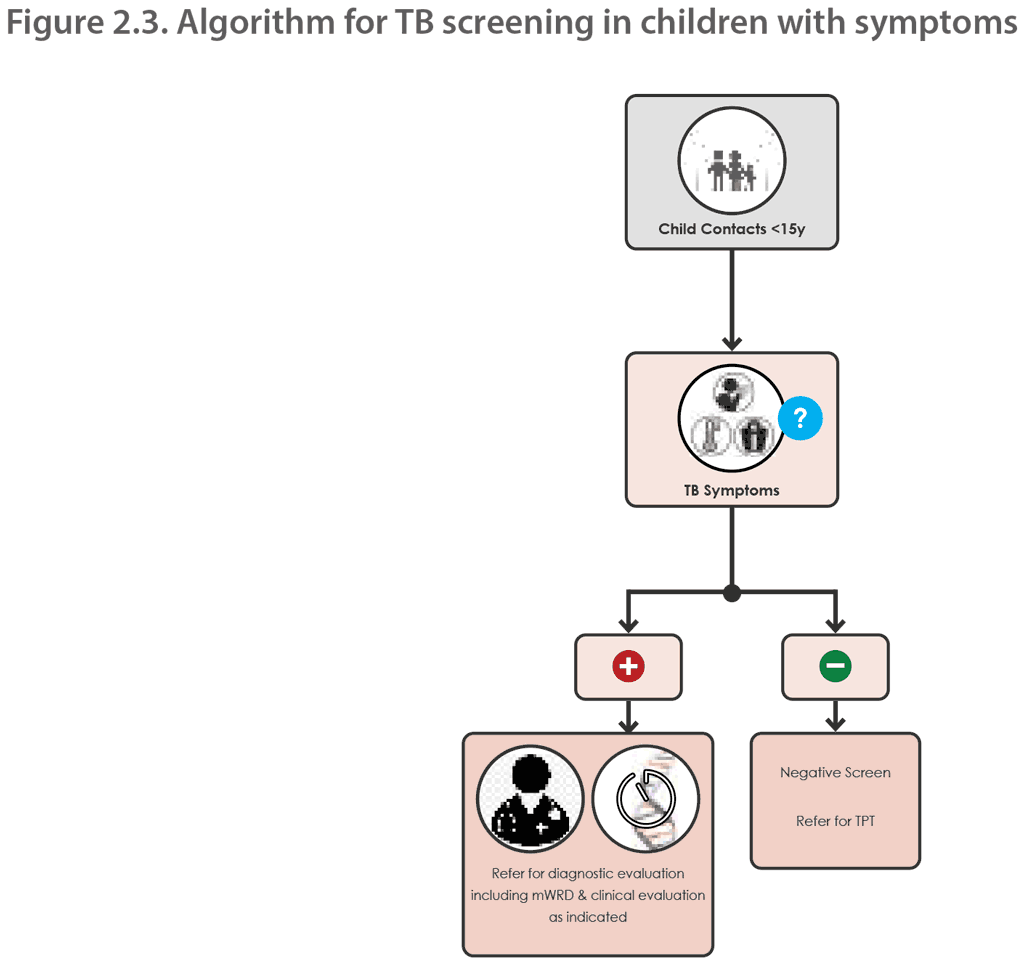Перекрёстные ссылки книги для 2.3.1.1. Symptom screening
Any child aged under 10 years who has had close contact with a person with TB disease should be screened for TB with a symptom screen or CXR as part of contact investigation. Symptoms used to screen for TB are cough for more than 2 weeks, fever for more than 2 weeks, and poor weight gain or weight loss in the past 3 months. In young children, reduced playfulness or lethargy should also be included, since prolonged cough may be absent in children with disseminated disease.
Screening is carried out using all questions as part of a symptom screen. If any one or more of the symptoms is present, the child is regarded as having a positive screen and should be managed as having presumptive TB (Figure 2.3). It is useful to examine growth charts regularly to determine whether a child has been losing weight or their weight has plateaued. Weight loss or a plateau in weight gain (failure to thrive) should be a warning sign for possible TB.

In a systematic review on screening tests for PTB disease in children, a symptom screen in which a child has any of the symptoms of cough, fever or poor weight gain had a sensitivity of 89% and a specificity of 69% for TB disease (against a composite reference standard) (25).
The low specificity of a symptom screen alone means that about 30% of children may undergo unnecessary diagnostic tests or even treatment for TB. The risk of a false-positive diagnosis of TB after a false-positive symptom screen may be higher among children than adults because such a diagnosis is frequently made solely on clinical grounds. Because of the high rates of mortality and morbidity among children with TB and the fact that TB treatment is generally very well tolerated, the risk of a missed diagnosis is generally judged to outweigh the risk of a false diagnosis and unnecessary TB treatment, especially because children generally tolerate TB treatment and TPT well (see Chapter 4). HCWs should nonetheless remain vigilant to possible false-positive TB diagnoses among children, monitor responses to treatment carefully, and consider alternative diagnoses, especially if a child is not improving on treatment. If a plausible alternative diagnosis is confirmed, providers may consider stopping TB treatment while remaining mindful that TB may coexist with other diseases. TB treatment should never be used as a “trial of treatment” (see Chapter 5).
 Обратная связь
Обратная связь